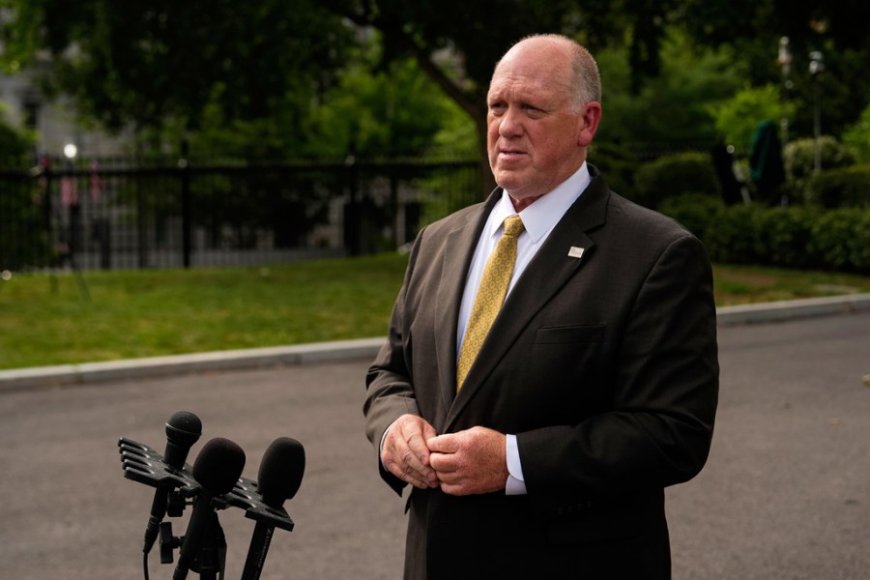Immigration whiplash is hurting American businesses during a labor crisis
American businesses are struggling to operate amid the destabilizing whiplash of immigration enforcement proposals, and expanding legal workforce pathways is a pragmatic and proven way to address the labor shortage.

Over the last month, American businesses have faced a destabilizing whiplash of immigration enforcement proposals. What began as a reported pause on raids targeting farms, hotels and other industries quickly reverted to aggressive action — with U.S. Immigration and Customs Enforcement agents returning to fields and factory floors just days later.
These shifts are more than policy tweaks — they are actively undermining the ability of American employers to operate, staff, and grow during a severe labor shortage that is on track to become much worse.
The whiplash for America’s employers has been painful. Most recently, President Trump alluded to possible worker protections for certain industries, echoing statements that assured farmers that they could continue to use undocumented labor, stating “we can’t put the farms out of business.” On June 12, Trump suggested a reprieve for key sectors, leading many to believe a targeted pause was in effect. By June 16, enforcement had resumed in full force, with top officials like border czar Tom Homan flatly denying any exemptions had ever been granted.
The lack of clarity — compounded by differing statements from within the administration — has left employers scrambling. Businesses that rely heavily on consistent staffing — whether it’s a vineyard in California or a food processing plant in Iowa — are suddenly operating in fear that their workforce may vanish overnight.
This isn’t just a political problem. It’s an economic one — and it’s getting worse. America’s workforce is facing a perfect storm. The labor shortage, exacerbated by demographic shifts, aging population, declining participation, mismatch of skills and the lingering effects of the pandemic, has left employers struggling to fill jobs in critical industries, from health care to construction to hospitality. Even more daunting is that this problem will continue for years to come, as the Department of Labor’s Bureau of Labor Statistics projections show a continuing fall in the labor force participation rates through 2030.
Expanding legal workforce pathways is a pragmatic and proven way to address labor shortages. This is most recently evidenced in a recently published landmark report by The Committee to Unleash Prosperity, The Impact of Immigrants on the 21st Century American Workforce, which makes clear that legal immigration isn’t a drag on the U.S. economy — it is the only viable and immediate path forward.
Authors Richard Vedder, Matthew Denhart and Stephen Moore — economists and thought leaders from institutions like Ohio University, the Calvin Coolidge Presidential Foundation and the Heritage Foundation — outline the demographic realities that underscore this crisis: from 2020 to 2040, all net growth in the American labor force will come from immigrants and their children.
The math is stark. The U.S. is aging rapidly, birth rates are falling, and millions of baby boomers are retiring. Native-born Americans of working age are not entering the labor force in sufficient numbers to maintain growth. Immigrants, by contrast, are younger, more likely to work, and more concentrated in prime working years. In fact, immigrants are twice as likely as native-born Americans to be in the 18–64 age bracket, and they have a higher labor force participation rate — 65 percent compared to 60 percent.
Businesses are not asking for amnesty. They are asking for predictability. They are asking for a system that allows them to hire legally and maintain continuity in their operations without living in fear that tomorrow’s policy memo will upend their workforce. A thoughtful and well-targeted legal immigration system, as the Unleash Prosperity report argues, is “more important today than ever given the aging of our native-born population.”
Some policymakers seem to understand these needs. Even among conservatives, there’s growing recognition that legal immigration is essential to achieving any long-term economic growth target. Stephen Moore, a former senior economic adviser to President Trump, puts it plainly: “Trump’s goal to grow by 3 percent over the next decade will be difficult, without an ample influx of immigrants to compensate for an aging American-born population.”
Unfortunately, the current moment is one of contradiction: while employers are being pushed to expand and relocate production to the United States, they are simultaneously being targeted for relying on the very workers who make that expansion possible. Enforcement cannot replace economic planning. If we want economic growth and sustained prosperity, we must also embrace legal pathways that let employers access the workforce they need.
Immigration isn’t an emergency to be managed. It is an asset to be mobilized — strategically, lawfully and transparently. Businesses large and small are ready to hire, train and invest in their workforce but they cannot do so amid such uncertainty.
Our workforce — including those who are here legally, have worked hard and support the economy — deserve better. And so do U.S. employers.
Misty Chally is the CEO of Capitol Solutions, LLC, and the Executive Director of the Critical Labor Coalition, a nonprofit organization dedicated to addressing the U.S. labor shortage.
What's Your Reaction?
























